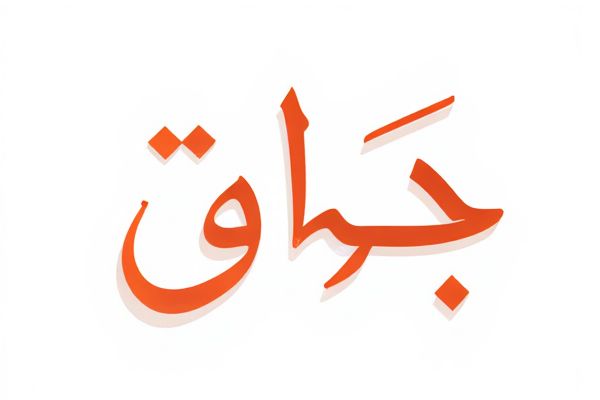
Explore our online random letter generator designed specifically for Arabic, offering a quick and easy way to create random Arabic characters for games, teaching, or creative projects. This tool ensures accurate Arabic script output with flexible options to customize the range and frequency of letters generated. Enhance your Arabic language practice or add an element of surprise to your activities with this reliable and user-friendly generator.
Online tool for random letter generator arabic
We have prepared several samples of random letter generators in Arabic for you to use and customize. You can easily enter your own list for randomization. With a single click, the tool provides a randomized list along with one selected value ready for use.Data Source
Single Result
Multiple Results
Introduction to Arabic Random Letter Generators
Arabic random letter generators produce unpredictable Arabic characters based on algorithms designed to simulate randomness, supporting tasks like cryptography, linguistic research, and educational exercises. These tools often incorporate the Arabic alphabet's unique features, including its right-to-left script and contextual letter forms, ensuring accurate and meaningful output. Random letter generators serve as valuable resources for generating test data, creating puzzles, and enhancing language learning through interactive content.
Key Features of Arabic Letter Generators
Arabic letter generators offer key features such as customizable font styles and sizes, ensuring accurate representation of complex Arabic script and diacritics. These tools support right-to-left text orientation essential for Arabic writing and provide options for generating single letters or entire words with varied character combinations. Integration with language processing tools enhances their utility for linguistic research, educational purposes, and creative design projects.
Benefits of Using Random Arabic Letters
Using a random Arabic letter generator enhances language learning by providing diverse practice opportunities with Arabic script and pronunciation. This tool aids educators and learners in creating customized exercises for writing, reading, and memorization, improving retention of Arabic alphabet characters. It also supports cryptography and coding applications by generating unpredictable Arabic letters for secure data encryption and testing algorithms.
Applications in Education and Learning
Random letter generators in Arabic are powerful tools for language learning, enabling educators to create engaging exercises that improve handwriting, spelling, and vocabulary acquisition. These generators facilitate interactive activities such as letter recognition games and phonics drills, which enhance students' understanding of Arabic script and pronunciation. Incorporating random Arabic letter generators in classrooms supports personalized learning by adapting difficulty levels to suit beginner through advanced learners.
Enhancing Creativity with Random Arabic Letters
A random letter generator for Arabic provides a dynamic tool to spark creativity by producing unpredictable Arabic letters for writing, poetry, or language practice. Utilizing this generator can enhance vocabulary development and inspire innovative expressions by encouraging users to form unique word combinations from randomized Arabic characters. This approach supports creative thinking and fluency in Arabic through engaging, spontaneous language exercises.
Popular Tools for Generating Arabic Letters
Popular tools for generating Arabic letters include online random letter generators such as Random.org's Arabic letter generator and LingoJam's Arabic letter picker. These platforms provide customizable options to produce random Arabic characters for language learning, cryptography, and creative writing projects. Advanced tools often support letters with diacritics, enhancing accuracy for Arabic script learners and educators.
User Interface and Language Support
The random letter generator Arabic tool features an intuitive user interface designed for seamless interaction, allowing users to effortlessly generate Arabic letters with customizable options such as letter frequency and character sets. Comprehensive language support ensures accurate rendering of complex Arabic script, accommodating various diacritics and ligatures to maintain linguistic authenticity. User-centric design elements like easy font selection and real-time preview enhance usability, making the tool ideal for educational purposes, linguistic research, and creative writing.
Security and Privacy Considerations
A random letter generator for Arabic must implement strong cryptographic algorithms to ensure unpredictability and resist attacks, safeguarding sensitive data in applications like authentication and secure communications. The system should use secure entropy sources and regularly update seeds to prevent pattern exposure and maintain high entropy levels. Privacy considerations include avoiding data leaks through metadata, ensuring no storage of generated sequences, and complying with data protection regulations to protect user information.
Advanced Customization Options
Random letter generators for Arabic feature advanced customization options, enabling users to select specific Arabic alphabets, including isolated, initial, medial, and final forms for precise character generation. These tools often allow adjustments for diacritics, letter case, and script variations such as Naskh or Ruq'ah styles to tailor outputs for linguistic research or educational use. Integration with phonetic patterns and frequency settings supports creating realistic or randomized Arabic text samples for diverse applications in language learning and software testing.
Future Trends in Arabic Random Letter Generation
Future trends in Arabic random letter generation emphasize enhanced natural language processing algorithms tailored for the intricate morphology of Arabic script, including diacritics and contextual letter forms. Advances in AI-driven models aim to improve accuracy in generating linguistically coherent sequences for applications in cryptography, education, and language learning tools. Integration with machine learning techniques promises dynamic adaptation to regional dialects and evolving language usage patterns.
 azrandom.com
azrandom.com